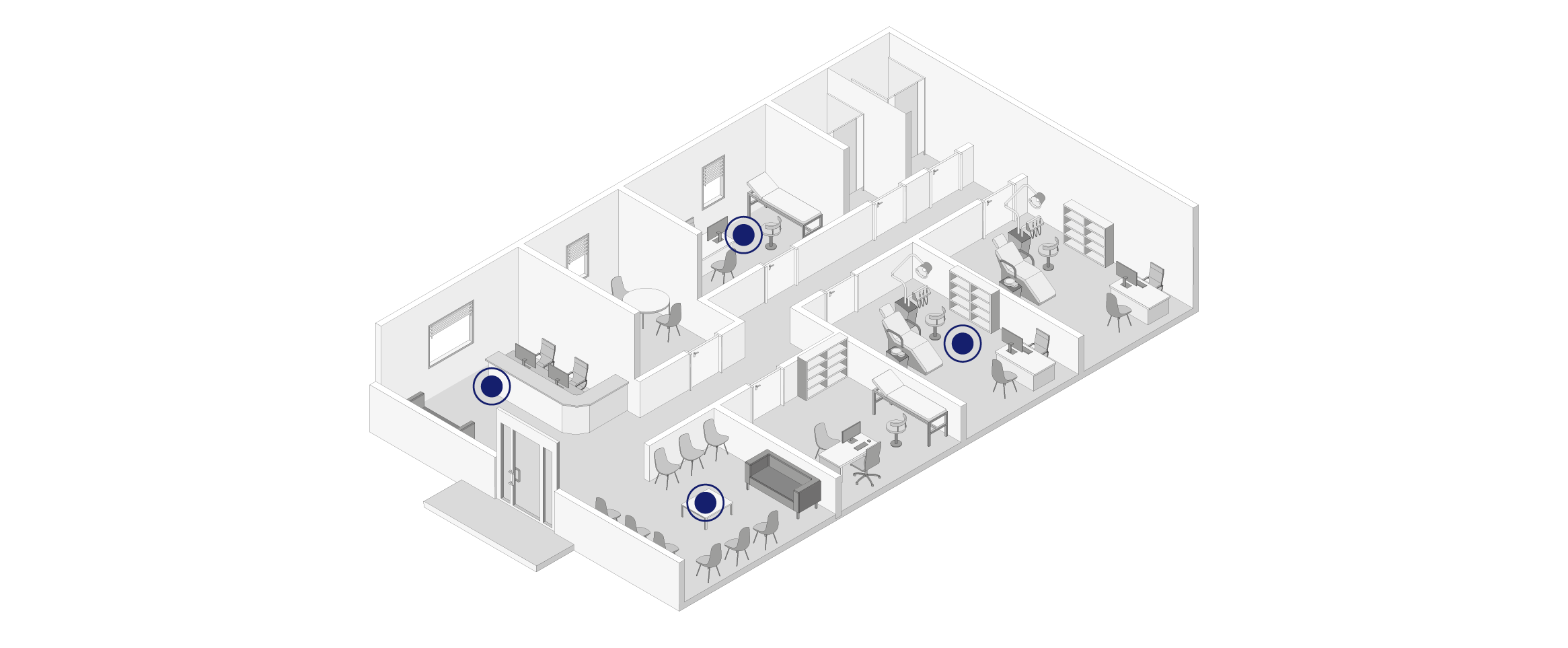


Medical practices reconcile human with medical considerations. Creating an ambience in which patients feel well cared for and reassured while offering medical precision in making diagnoses is paramount. The solution is separate, needs-based access points in the lighting design.
The light in the waiting room should have a relaxing effect, while at the reception desk, which is also a workplace, stronger illumination and good glare control are required. Special practice luminaires ensure standard-compliant brightness in the medical treatment room.

The reception is a medical practice's business card and a patient's first point of contact. It should be lit in a bright and friendly manner and offer patients orientation. Separate accent lighting can add emphasis to the reception area and guide visitors more clearly through the practice.
Staff, however, spend many hours at the computer. Thus, attention must be paid to ergonomic, standard-compliant computer workstation design. A UGR value of at most 19 ensures moderate direct glare. Higher illuminance is generally recommended above the desk. This creates good visibility and a visual separation between the reception, entrance, and waiting areas. Above all, the reception is an area of communication, so it is even more important to create an atmosphere of trust and security.
Cylindrical illuminance should be at least 150 - 300 lux at eye level. This can be achieved with suspended luminaires above the counter or indirect light from the wall or ceiling. For good communication, the ratio of cylindrical to horizontal illuminance is defined as between 0.3 and 0.6 in the lighting standard. This modelling indicator shows how well the face and facial expressions are recognisable, which influences our interactions decisively. Lighting plays a calming role in the waiting room. EN 12464-1 stipulates a basic brightness of 200-300 lux. However, to ensure that patients have sufficient light when reading or completing questionnaires, a significantly higher illuminance is recommended. Warm-toned light in waiting rooms has a relaxing effect, lowers stress levels, and conveys a sense of security.
In doctors' consulting rooms, at least 500 - 750 lux is required; in examination and treatment rooms, 1000 - 1500 lux is required on the examination areas – depending on the medical specialisation. It is important to use luminaires in the practice that have good glare control so that patients lying down are not dazzled from above. A high indirect light component improves the UGR value and reduces the contrast to the light emission surface.
One usually works with three light zones in a dental practice. In the patient treatment area, an illuminance of 1000 lux is specified (in accordance with EN 12464-1), while 500 lux is sufficient for general lighting in the treatment environment. Special luminaires providing 5000 to 10000 lux are used to illuminate the operating area. The demand on colour reproduction quality is particularly high in a dental practice. In cosmetic corrections or when matching artificial teeth with the patient's own teeth, even minimal colour differences between teeth can impair the overall aesthetic appearance.
Therefore, neutral or daylight white illumination by high-quality LED luminaires is required throughout the room. These achieve Ra values of up to 98 – for an almost true-colour result. A double-sided or circumferential rectangular-square luminaire arrangement must be provided above the examination chair so that patients are not dazzled when lying down. Full spectrum LEDs create exceptionally natural working and medical assessment conditions thanks to their high colour fidelity.